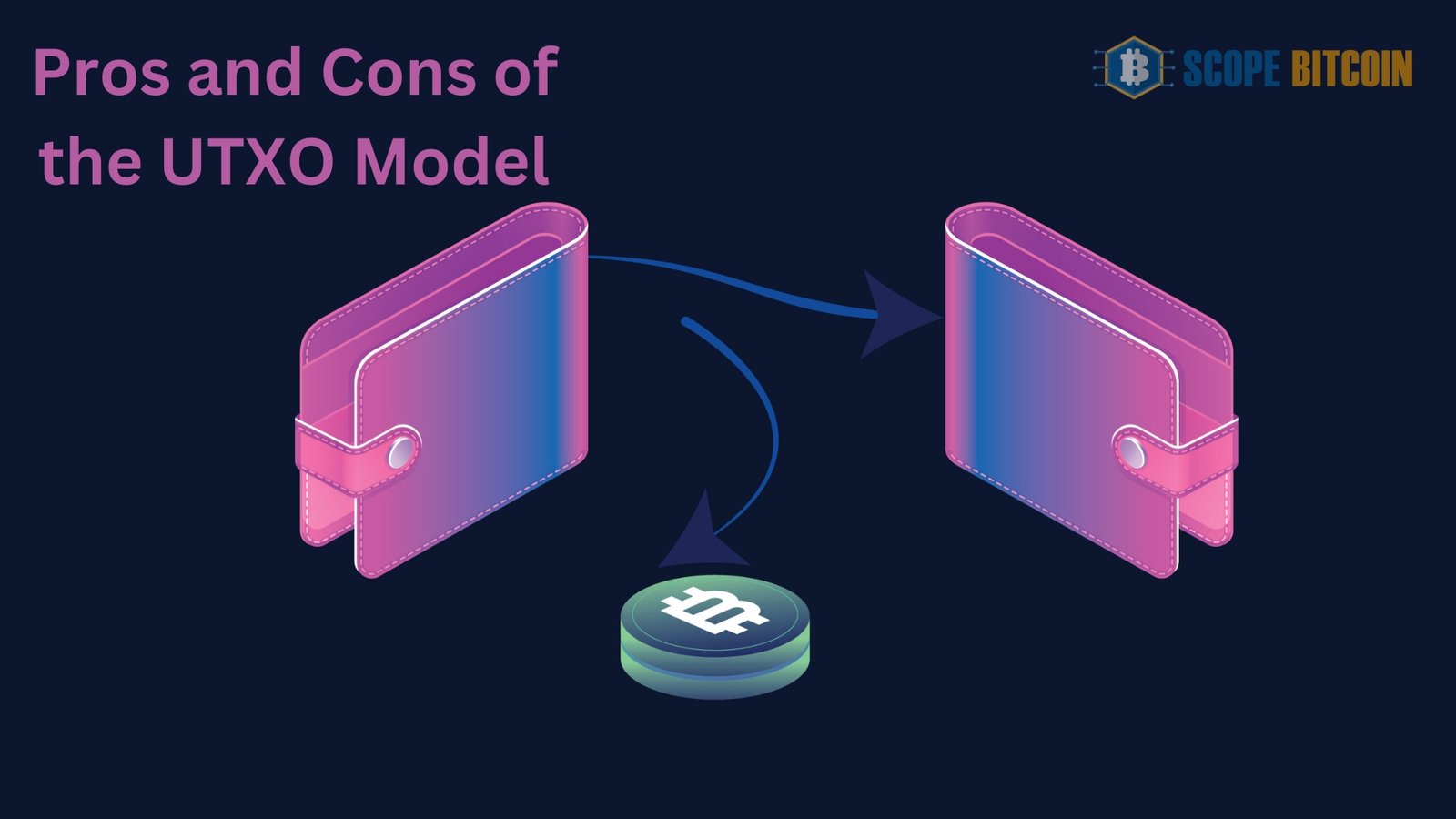
Bitcoin’s UTXO Model—How to Manage UTCXs?
Bitcoin’s UTXO Model Due to several reasons, such as institutional interest, the approval of Bitcoin exchange-traded funds (ETFs) based in the United States, and anticipation of the upcoming Bitcoin halving in April, the value of the most popular cryptocurrency in the world—Bitcoin—rose meteorically to a new all-time high in 2024, reaching $64,348. Still, many people don’t understand the Bitcoin script the network employs to handle transactions correctly, specifically the Bitcoin network’s UTXO architecture.
What is the Bitcoin UTXO Model?
It is crucial to define the Bitcoin transaction lifecycle before delving into UTXOs. Bitcoin transactions are slightly more complex from a technical standpoint than currency transactions. In contrast to traditional cash transactions, which frequently involve entire dollar denominations like $5 or $10, Bitcoin transactions can be as small as down to the eighth decimal place, known as a satoshi. This demonstrates the significant degree of divisibility of Bitcoin.
Before starting a Bitcoin transaction, you should know that the wallet does not hold the Bitcoin. The wallet’s primary function is facilitating access and management of the user’s Bitcoin address funds. All network transactions, including those involving the user’s funds, are recorded in the public ledger known as the blockchain. Bitcoin nodes begin the validation process whenever a user initiates a new transaction. The mempool is the next stop for valid transactions before miners choose which ones to include in the next block.

Miners compete to add a new block to the blockchain by solving a difficult challenge. Additional nodes confirm the transactions in the block. The blockchain separates the payment process into blockchain inputs and outputs to keep track of Bitcoin transactions accurately. Because it is “outputting” cash to create an “input” for the receiving wallet, the wallet that initiates a transaction is an output. But the network can’t send money out of a wallet unless something goes into it first. The balance of a Bitcoin wallet is comprised of these inputs.
The amount of input can range from a few satoshis to many bitcoins. These inputs end up in a wallet after a series of transactions. For the sake of argument, assume that Bob’s wallet has three unspent UTXOs due to the receipt of 3.75 Bitcoin in three distinct transactions.
When Bob wants to spend 0.50 BTC, the Bitcoin network searches his wallet for appropriate UTXOs to utilize as inputs for the new transaction. Since Bitcoin transactions must pay the entire amount of input, Bob will receive 0.25 BTC back into his wallet as a new UTXO, sometimes called “change,” if he uses the 0.75 BTC UTXO.
You might think of this as being similar to dealing with currency. If Bob wanted to pay $27 with $100 in bills but only had $20 and $10 on hand, he could combine the two bills and get $3 back in change.
Nevertheless, Bitcoin dust—bitcoins that have accumulated in a wallet but cannot be spent—can be obtained. Even smaller UTXOs are the outcome of smaller Bitcoin transactions. Transit fees can eat into their value when outputs are undersized, rendering them unusable. Avoiding the buildup of Bitcoin dust requires careful management of UTXOs.
Bitcoin Wallets Choose Transaction Outputs How?
The Bitcoin UTXO model usually follows the FIFO paradigm when sorting UTXOs into spending categories. Because of this currency selection procedure, it will use the oldest Bitcoin in a wallet to start a transaction by default. However, advanced Bitcoin users may usually find a way to bypass FIFO in their wallet software.
Privacy within the UTXO model
A UTXO represents the unspent outputs of a Bitcoin wallet, much like a Bitcoin wallet, which means funds. The address a Bitcoin wallet uses to send and receive money is called the wallet address. However, to increase anonymity with each Bitcoin transaction, users can set their wallet to generate a new address automatically. A user’s Bitcoin holdings may eventually spread across many addresses associated with a single wallet.
When a user receives Bitcoins, the network may create a new address and use it to send UTXOs. Therefore, without knowing all the addresses associated with a wallet, it is tough for anyone to trace its transaction history. Only the address generated for that particular transaction will be visible to the other user with whom Bob transacts.
Pros and Cons of the UTXO Model
Although different networks use various approaches to monitor transactions, UTXO monitoring features were integrated into the Bitcoin protocol. Below is a list of at least one drawback of the model:
Pros of the UTXO model
Secure
One way the UTXO model keeps tabs on who owns what Bitcoin is is by checking if a specific wallet was the recipient of coins in prior transactions. Inputs contain the sender’s public wallet details, after all. The network can trace Bitcoin to its mining wallet by analyzing the scripts used for input and output in a transaction. Because of this apparent historical fact, the double-spend strategy cannot be applied.
Considerate
Transactions do not show a complete wallet balance. A user’s total Bitcoin holdings can be even more difficult to trace if they set their wallet to generate new addresses for each transaction.
Cons of the UTXO model
Traceable
A wallet’s transactions can only be as private as the Bitcoin blockchain, which is a public record of all transactions. An observant user could detect the spending patterns of a single wallet even though the UTXO security architecture distributes transactions across the network. Some users may choose a privacy coin to avoid this, even though this absence of UTXO pruning isn’t necessarily harmful.
Expensive
A transaction charge is applied to the amount of Bitcoin transferred, regardless of the quantity. Transaction costs increase as the amount increases. Due to the high volume of transactions required to generate an input, users with numerous UTXOs spread across different wallet addresses will incur even higher costs.
Bitcoin dust
Bitcoin dust can accumulate due to inefficient UTXO maintenance. Receiving many minor Bitcoin transactions over time will result in the creation of Bitcoin dust. A more extensive Bitcoin blockchain is a result of dust UTXOs.
Because miners prioritize transactions according to fee size, dust UTXOs could cause network congestion, prolonging confirmation times. To lessen their impact on the blockchain, however, several exchanges and wallets provide features to combine smaller UTXOs into bigger ones.
Best UTXO Management
With proper wallet management, you may avoid paying exorbitant transaction fees and wasting Bitcoin dust. To ensure a pristine transaction experience, consider the following Bitcoin UTXO management suggestions:
Wallet consolidation
UTXO consolidation involves merging all of a wallet’s UXTOs into a single UTXO by sending them back to the wallet. This prevents Bitcoin dust created when smaller transactions add up from building up. Consolidation also prevents the extra fees that come from making numerous transactions at once, which is helpful if a wallet has groups of UXTOs distributed across different addresses.
Timing the market
Cryptocurrency traders who keep up with the market know that Bitcoin transaction fees might change anytime. It’s wise to conduct business while transaction fees are minimal. Similarly, you can save money in the long term by postponing UTXO size optimization until fees are low enough. UTXO consolidation is not time-bound.








